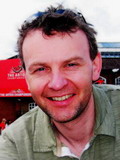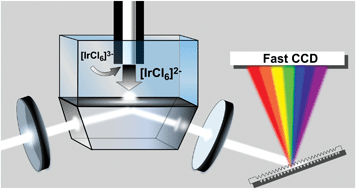
Professor Pat Unwin, Electrochemistry and Interfaces Group, Department of Chemistry, University of Warwick
Apologies for the wait but here’s the second part of Prof. Mike Lyon’s interview with Prof. Pat Unwin. You can catch up with the first part here to find out about his love for Allen Bard, Liverpool and The Beatles.
Mike: At the first Eirelec in 1993, there was a perception around that there was a two culture divide in electrochemistry between physical and analytical electrochemists. Do you think that that divide still exists, is it still alive and well?
Pat: One of the appeals of electrochemistry is that it is broad in its application, scope and impact – and it has never been more important. The sub-divisions of the field, such as analytical electrochemistry, physical electrochemistry, bio-electrochemistry, materials electrochemistry, nano electrochemistry, etc. are significant in their own right and so the challenge for us in the “broad church of electrochemistry” is to try and make sure that there are strong links between the different areas, and an interchange of ideas and methods so that the whole remains healthy. I’m not sure there is necessarily a strong divide, because you see that many of the most successful electrochemists are actually working in different camps, and they naturally take ideas from one field into another. It’s also important as electrochemists that we bring in people in from other areas. We’ve been doing that in the Warwick group – over the last few years we’ve had mathematicians and computer scientists coming into the group on joint programmes with other departments and making a big impact, as well as people who have been trained in chemistry.
Mike: What will drive electrochemistry in the next 10 years?
Pat: I don’t really like to make predictions, because one startling development can come from out of the blue and really shape a whole field, and just one person working on their own can come up with something that has huge implications for a field. Some of the biggest developments have come about that way. But there are the general challenges that have been around in electrochemistry, to do with: can we really do single molecule electrochemistry, for example? How small can we go reliably? What happens when you truly go down to the molecular scale and so on? I think there is still a lot to do in terms of pushing the time and space resolution. In terms of instrumentation and techniques, as a community, most of the work is with the same kind of set ups we have used since the 1960’s and 1970’s so maybe that’s something that we need to really think about.
Mike: So are you implying in a way that we are at the stage pre-George Porter in the 1980’s: still at the microsecond or even the nano second scale?
Pat: I’m not sure that there are that many convincing examples of even ten nanosecond electrochemistry actually. And there is still much to do on probing structure-function.
Mike: I was shocked when the continuum electrochemical framework, such as the diffusion equations and all of that, seemed to hold valid. The predictions of Fick’s diffusion law holds valid at the nanoscale; I thought there would have been a region of space where they would not be valid any more, but judging from a lot of the preliminary work that’s been generated at the moment with very small electrodes, you seem to be getting coherent current voltage curves?
Pat: Well, there are considerable experimental challenges in carrying out electrochemistry at the nanoscale, and ultimately molecular scale. At the moment most characterisation of nanoscale electrodes and electrochemical devices comes from the electrochemical signal itself and there is often little direct evidence of electrode geometry at that scale, which is a real challenge. There are also issues with measuring very small current signals with the appropriate time resolution, in order to see stochastic events. So, there are some interesting measurement challenges for electrochemists and electronic engineers, and we have to think about doing electrochemistry in new ways.
Mike: And finally, Pat, looking back on your career to date, what is, in your opinion, your most successful or most significant discovery?
Pat: Well I’m actually excited about our current work with scanning electrochemical cell microscopy (SECCM); the idea of bringing very small volumes of solution to a surface and being able to make simultaneous electron transfer and ion transfer measurements, and resolve topography at the same time. But actually, as academics, it’s really the people who come out of our labs and groups who are most significant, and what they go on to do.
Mike: Okay, thank you very much Pat for answering these questions.
Pat: Thank you. It has been a pleasure talking with you.
Take a look at Pat’s paper in Analyst from last year:
Following interfacial kinetics in real time using broadband evanescent wave cavity-enhanced absorption spectroscopy: a comparison of light-emitting diodes and supercontinuum sources
Lineke van der Sneppen, Gus Hancock, Clemens Kaminski, Toni Laurila, Stuart R. Mackenzie, Simon R. T. Neil, Robert Peverall, Grant A. D. Ritchie, Mathias Schnippering and Patrick R. Unwin
Analyst, 2010, 135, 133-139
DOI: 10.1039/B916712A











